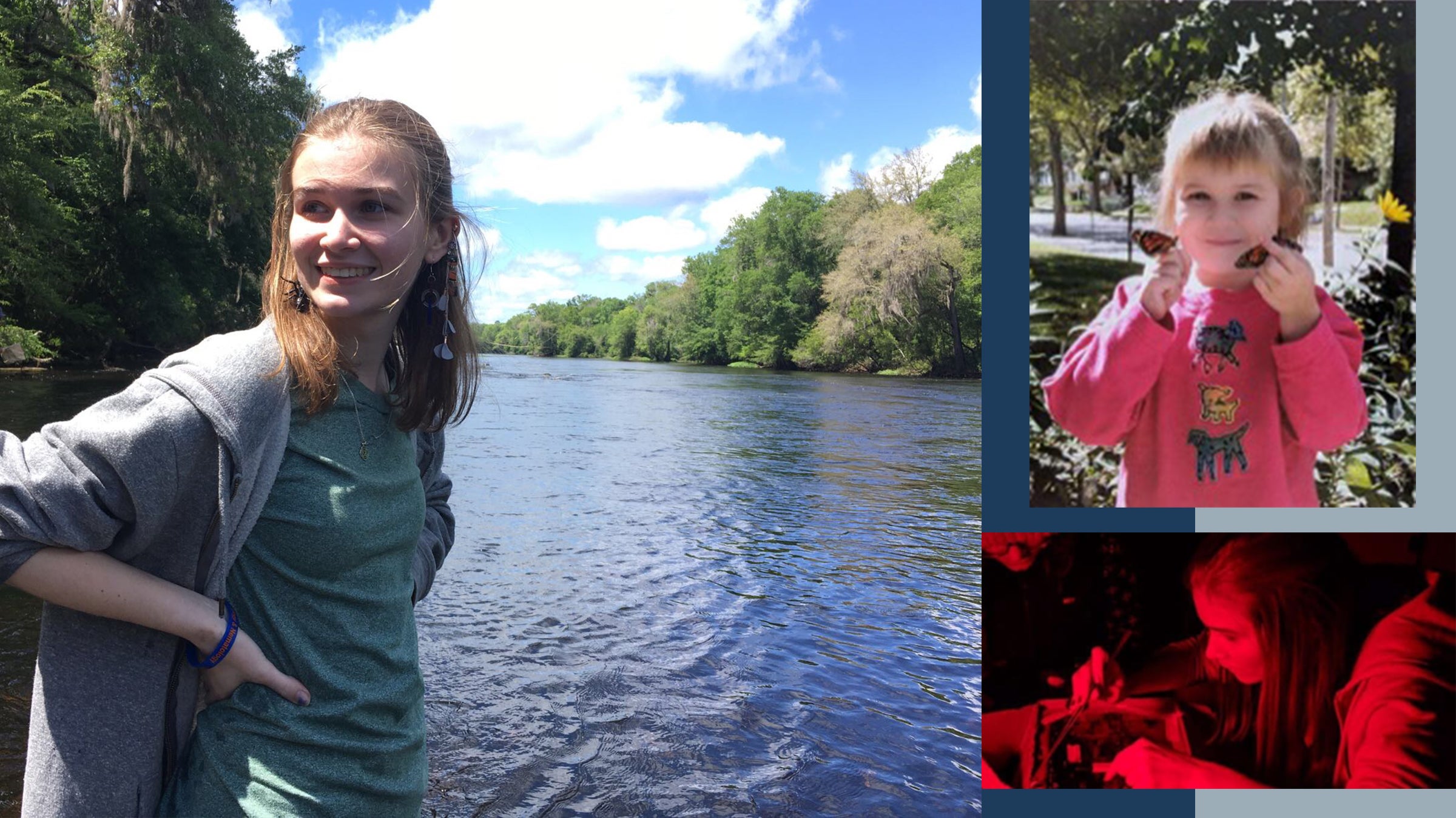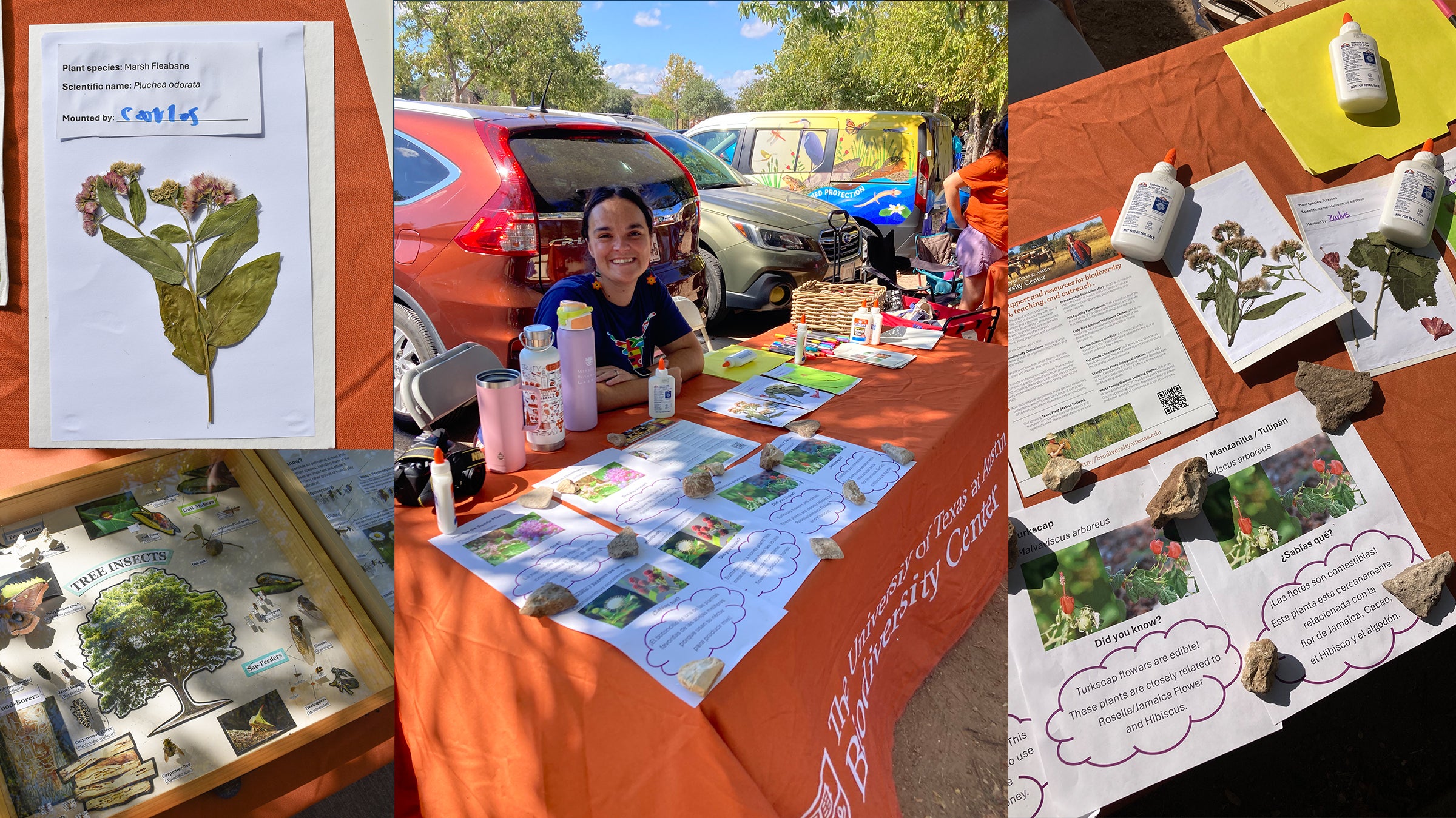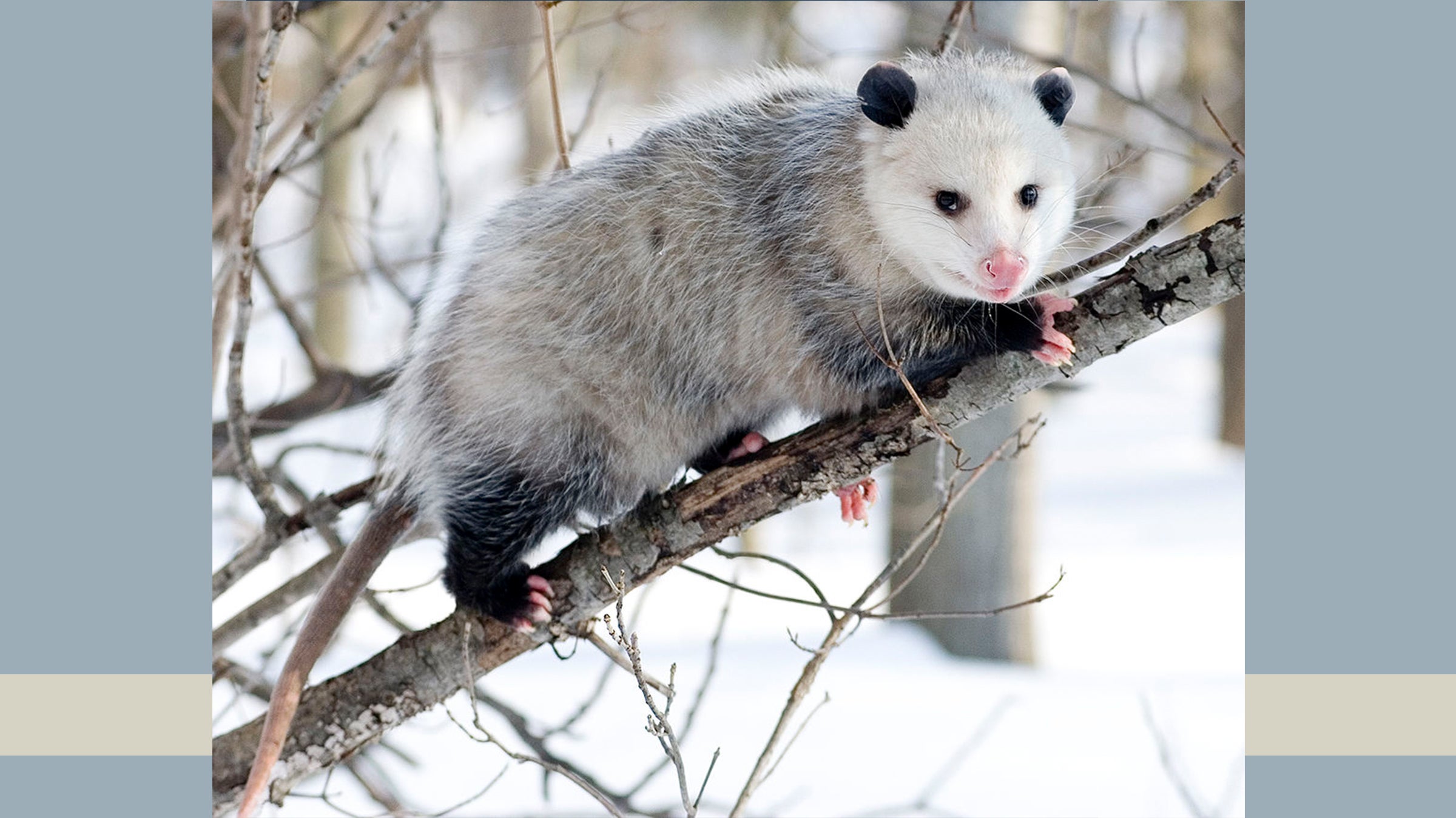
Virginia Opossum (Photo by Cody Pope)
At night, the UT campus slows but never quite stops. Those out and about in the dark hours might witness some of the nocturnal creatures on campus, one being the only marsupial native to North America: the opossum.
The opossum is of the order Didelphimorphia and is endemic to the Americas, the Virginia opossum (Didelphis virginiana) being the only species in North America. They were not originally native to the West Coast of the US, but now occupy parts of this area. Some believe they were introduced here during the Great Depression as a source of food for people during scarce times.
Opossums are often mistakenly called “possum.” However, possums (order Diprotodontia) are arboreal marsupials of Australia and New Guinea, but do bear some resemblance to Didelphimorphia. The generic name of Didelphis is derived from Ancient Greek: di for “two” and delphus for “womb.”
LIFE CYCLE
Opossums are born at a very early stage after a 12-14 day gestation period. They are blind, furless, and about the size of a European honey bee. They are called “joeys” and females give birth to about one to three litters per year. Each litter can have 20-50 young, but with females having only usually 13 teats to feed her joeys, many of these newborns will not survive into adulthood.
Upon birth, the newborn crawls up its mother’s fur and into her pouch. Many fail this process, but those that make it latch to one of their mother’s nipples. They lack suckling reflexes, so the new joey cannot suckle like most mammals. The milk they consume leaks through their mother’s skin.
Babies are eventually weaned between two to two and a half months. They then emerge from the pouch and hitch a ride on mama’s back while she forges for food. At about four or five months, the young opossums have learned enough survival skills and it’s time for them to become independent. To send her young out into the world, the mother literally brushes up against something to knock her babies from her back, and leaves.
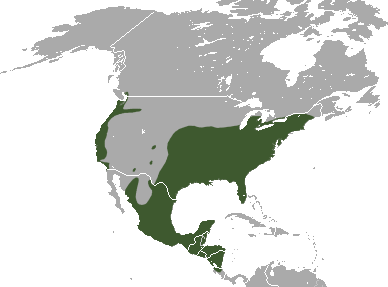
Range of Virginia Opossum (By IUCN Red List of Threatened Species, species assessors and the authors of the spatial data., CC BY-SA 3.0, https://commons.wikimedia.org/w/index.php?curid=12400013)
As these young newly-independent opossums become adults, they will typically become solitary creatures and remain nomadic, staying in one area only as long as there is a supply of food and water. Opossums are scavengers, eating dead animals and human food waste. They also eat rodents, insects, and birds.
The life span of an opossum is very short, one to two years in the wild, and four years on average in captivity. They lack many defense mechanisms, but one they have is what is popularly known as “playing ‘possum.” This is actually an involuntary response the opossum has when it is injured or extremely frightened. When this happens, the animal essentially faints. Its lips draw back, teeth are bared, eyes are half closed and a foul-smelling fluid secrets from its anal glands. This usually is enough to keep away potential predators. The stiff opossum can be handled in this state which lasts from just a few minutes to several hours. When it passes, the animal gets up and resumes normal behavior.
CONTRIBUTIONS
Perhaps because of their rat-like tail, some people tend to be alarmed and disgusted when sighting an opossum. However, these creatures are not aggressive and want only to be left alone. They are also unique as the only marsupial in North America and beneficial in a number of other ways.
As a scavenger, opossums keep our environment cleaner by eating dead things that might otherwise rot. They also eat things we tend to not like having round like roaches, rats, and mice. Opossums are also fastidiously clean creatures. When finding a tick on their fur, they will lick it off and swallow it up. Some estimates state that during a season, an opossum will kill around 5000 ticks in this manner. This keeps these insects and diseases like Lyme disease under control for humans and our domestic animals.
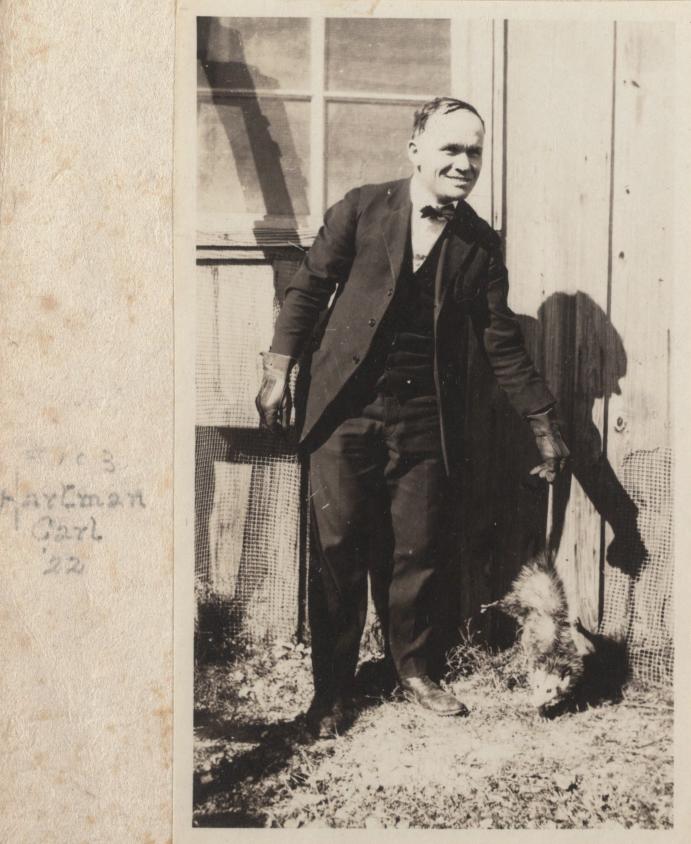
Hartman with one of his opossums. Embryo Project Encyclopedia (1922). ISSN: 1940-5030 http://embryo.asu.edu/handle/10776/2481.
OPOSSUMS AT UT
Opossums have long been present on campus. The first PhD of UT, Carl Hartman, did his 1915 doctorate level research on the embryology of the opossum. Before this time, the Virginia Opossum had never been studied before. Hartman and his students held nocturnal hunts for the creatures. He kept them in hand-made cages in his backyard where he fed them from his family's kitchen, collecting some 300 animals.
Carin Peterson with Environmental Health and Safety (EHS) at UT says that occasionally an opossum will be seen on campus during daylight hours and this causes some to inaccurately believe the animal is rabid. “Most opossums out during the day were either making their way home or their hiding spot was disturbed,” Carin says. “We also tend to see an increase in opossums out during the day when new construction projects begin.” She notes that opossums are unlikely to be rabid due to their low body temperatures, between 94-97 degrees, which make it difficult for the virus to survive.
Opossums also walk funny by their nature, which Carin notes, causes unnecessary alarm. “They may appear to be uncoordinated or have something wrong with them when it’s just the way they walk,” she says.
Occasionally, EHS will get calls about baby opossums being on their own. “The general rule is,” Carin says, “if the baby is seven inches from tip of nose to the base of the tail, it is old enough to survive on its own.”
FUN OPOSSUM FACTS:
Opossums are essentially immune to snake venom. A particular molecule, called a peptide, resides in the opossum’s blood and neutralizes snake venom.
Opossums were once a more common in diets for people in the US, particularly in the deep south where they were often eaten with sweet potatoes. President Jimmy Carter hunted opossums, and author Mark Twain also listed them as a staple of American cuisine.
In northern and central Mexico, their tails are often eaten as a folk remedy for improving fertility.
They have a whopping 50 teeth!
The Campus Biodiversity series explores the urban wildlife and plant life of UT Austin.
SOURCES
“Opossum: Didelphis virginiana,” San Diego Zoo Animals and Plants (accessed online: https://animals.sandiegozoo.org/animals/opossum)
“Opossums; Why We Love Them,” Friends of Texas Wildlife, (August 16, 2016) (accessed online: http://www.ftwl.org/node/151)
“Virginia Opossum: Didelphis virginiana” eNature.com (accessed online: https://web.archive.org/web/20110517185002/http://enature.com/fieldguides/detail.asp?allSpecies=y&searchText=opossum&curGroupID=5&lgfromWhere=&curPageNum=1)

